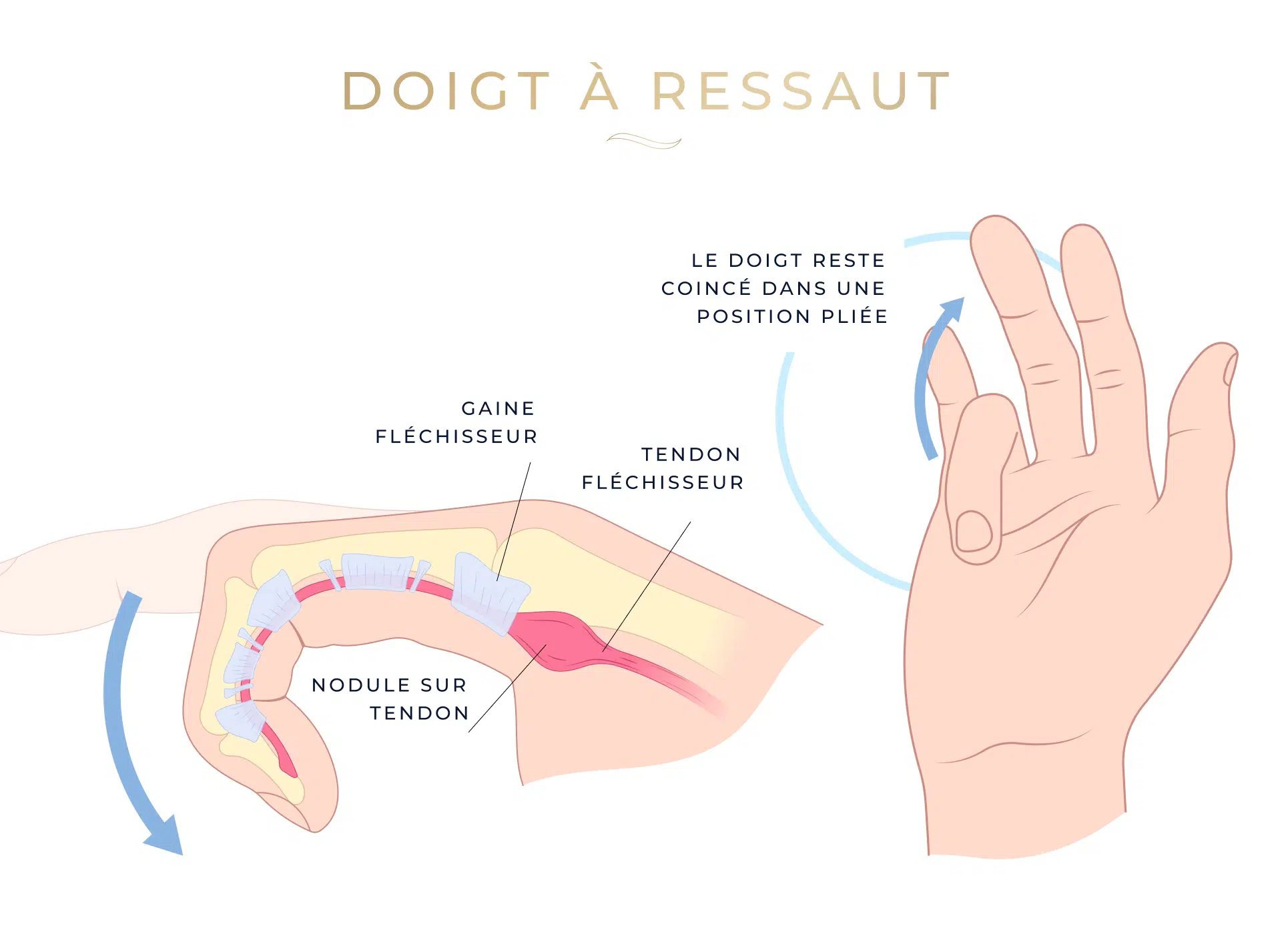Surgery is recommended when conservative treatments, such as anti-inflammatory drugs, corticosteroid injections or splints, fail to relieve symptoms. Patients suffering fromtrigger finger may experience intense pain, loss of mobility and an inability to perform daily tasks. The inflamed finger may remain swollen, in a bent position.
Trigger finger surgery aims to release the inflamed flexor tendons at the entrance to the digital canal, restoring pain-free, fluid movement. This procedure improves patients’ quality of life by restoring full finger function and relieving associated pain.
In some cases, carpal tunnel surgery is performed at the same time.
